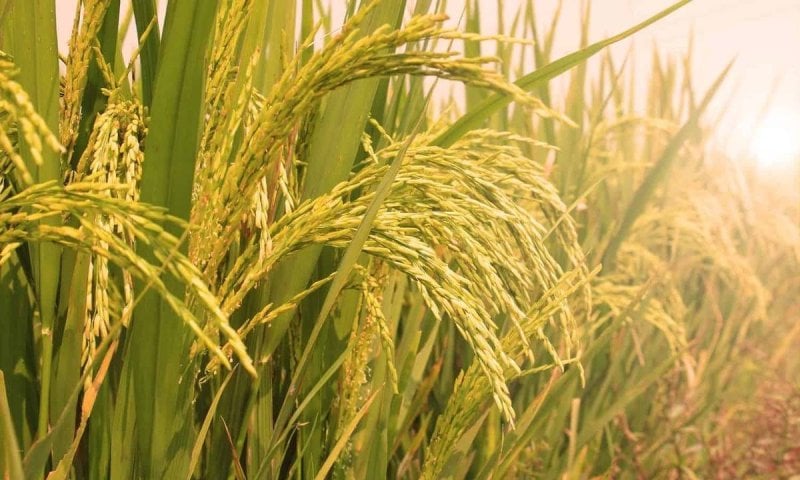Tags
Why rice prices are still on the boil despite govt’s bid to keep a lid on them
Trade and industry insiders argue that officials lack an understanding of the rice trade dynamics, emphasizing the scarcity of in-demand rice varieties as a key factor driving higher prices.

The Centre has been making concerted efforts to control the sharp rise in prices of rice over the past few months and has even warned traders that it could resort to actions such as imposing stock limits or even banning exports. But the efforts have been in vain.
Trade and industry sources, speaking to businessline on the condition of anonymity, said government officials have failed to appreciate the dynamics of the rice trade.
Short supply
“Officials will have to know there is a lot of difference in selling wheat and rice. Also, the issue of rice prices ruling higher is because there is short supply of the varieties that are in demand,” said an exporter based in South India.
According to the Ministry of Consumer Affairs, rice prices have increased by nearly 13 per cent, while, at the same time, those of wheat flour (atta) have gone up by only 1.5 per cent.
Last week, the Food Ministry convened a meeting of rice exporters and traders to find out the reasons for rice prices ruling high and why the offtake from the FCI e-auctions held every week is poor. It plans to hold another meeting on January 15, sources said.
The FCI has been able to sell 3.53-lakh tonnes (lt) of the four lakh tonnes on offer, while it has been able to offload only 10,000 tonnes of rice of the 1.93 lt it has offered at the weekly e-auctions.
Each country in the region consumes a particular variety of rice, and there is a shortage that has been carried over since 2022 and is aggravating now. “We are witnessing a scenario similar to the one we saw in wheat in 2022,” said a trade analyst.
The problem with rice is that farmers, particularly in the North and a few other parts of the country, are growing varieties that are procured by the FCI and consumed by African countries, said the analyst.
“There is a shortage of key rice varieties such as Sona Masuri or Ponni, leading to a rise in the cereal’s prices,” said the exporter.
FCI’s terms
An exporter from the North said FCI’s terms for its tenders were also posing problems. It is selling in lot sizes of 100 tonnes on a “quality as is where is” basis. The agency offers old crop and seeks a 100 per cent advance payment.
One of the reasons for the supply shortage witnessed in rice is that farmers are trying to grow paddy varieties that are procured by the Food Corporation of India (FCI).
A Delhi-based trade analyst, who did not wish to be identified, said as a result, farmers are trying only to boost the yield of these varieties.
Seed industry sources say over 430 paddy varieties are grown in various agro-climatic conditions across the country. This is actually down from the 15,000 varieties grown before Independence. “But the focus is more on the varieties that farmers can offload with the FCI,” the analyst said.
A North India-based exporter said traders are not looking to buy from FCI as additional costs are involved in buying from the parastatal agency.
“There are logistics costs of lifting the consignment. Traders have to pay an earnest money deposit to FCI once the sale is completed,” he said.
Poor procurement
The response to FCI auctions is poor as a major section of the rice-eating population will not consume the cereal sold by the agency through open market sale. “FCI rice is basically distributed through the public distribution system. How many people actually consume rice issued through ration shops?,” the analyst wondered. “The other issue is FCI has set a target to procure 52 million tonnes (mt) from October 2023. But its procurement is 14 per cent lower than last year. The agency trying to compete with traders to procure is also pushing up prices,” he said.
Rice procurement by FCI for the Centre’s buffer stocks during October 1-December 31 dropped to 29.93 mt from 34.79 mt a year ago.
Planning on cultivating drought-tolerant varieties is being done out of “ignorance” and officials have to focus on “consumers preference”, said the analyst. The Centre will also has to re-evaluate production estimates of previous years to reflect the ground reality rather than simply look at food security, he said.
Cost factor
Traders said the price of non-basmati rice is ₹42 a kg mainly due to infrastructure and other costs such as labour and milling. Many traders rely on the Central Warehousing Corporation to store rice and it charges ₹14 a bag per month.
“With rice traders operating on a thin 2-3 per cent margin, such costs have to be lowered or controlled,” a South India-based exporter said.
The Centre can get a clear picture on production by asking the States to provide data since they collect cess for the cereal traded in their State. Also, the Agricultural Produce Marketing Committees can help with the data they have.
https://www.thehindubusinessline.com/economy/agri-business/why-rice-prices-are-still-on-the-boil-despite-govts-bid-to-keep-a-lid-on-them/article67728065.ecePublished Date: January 10, 2024






